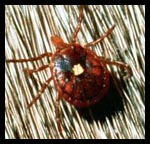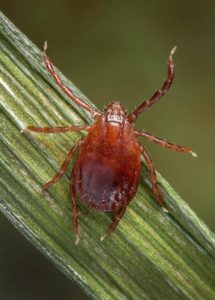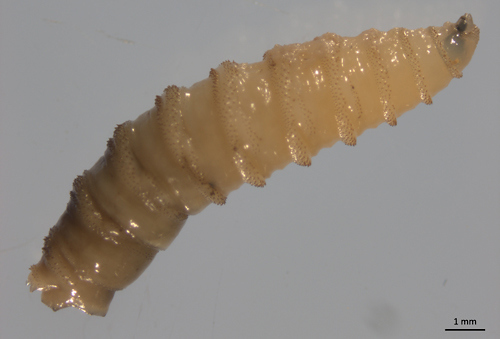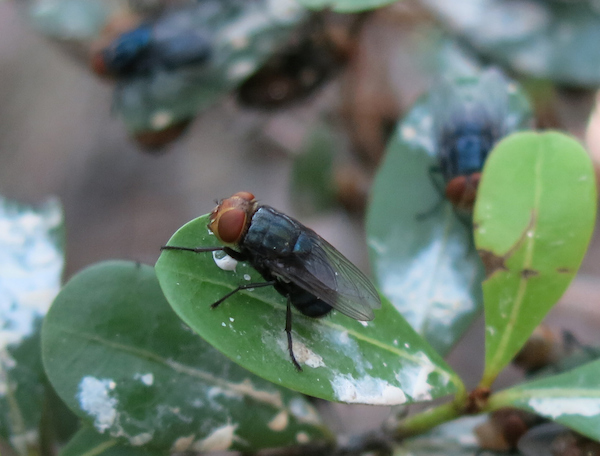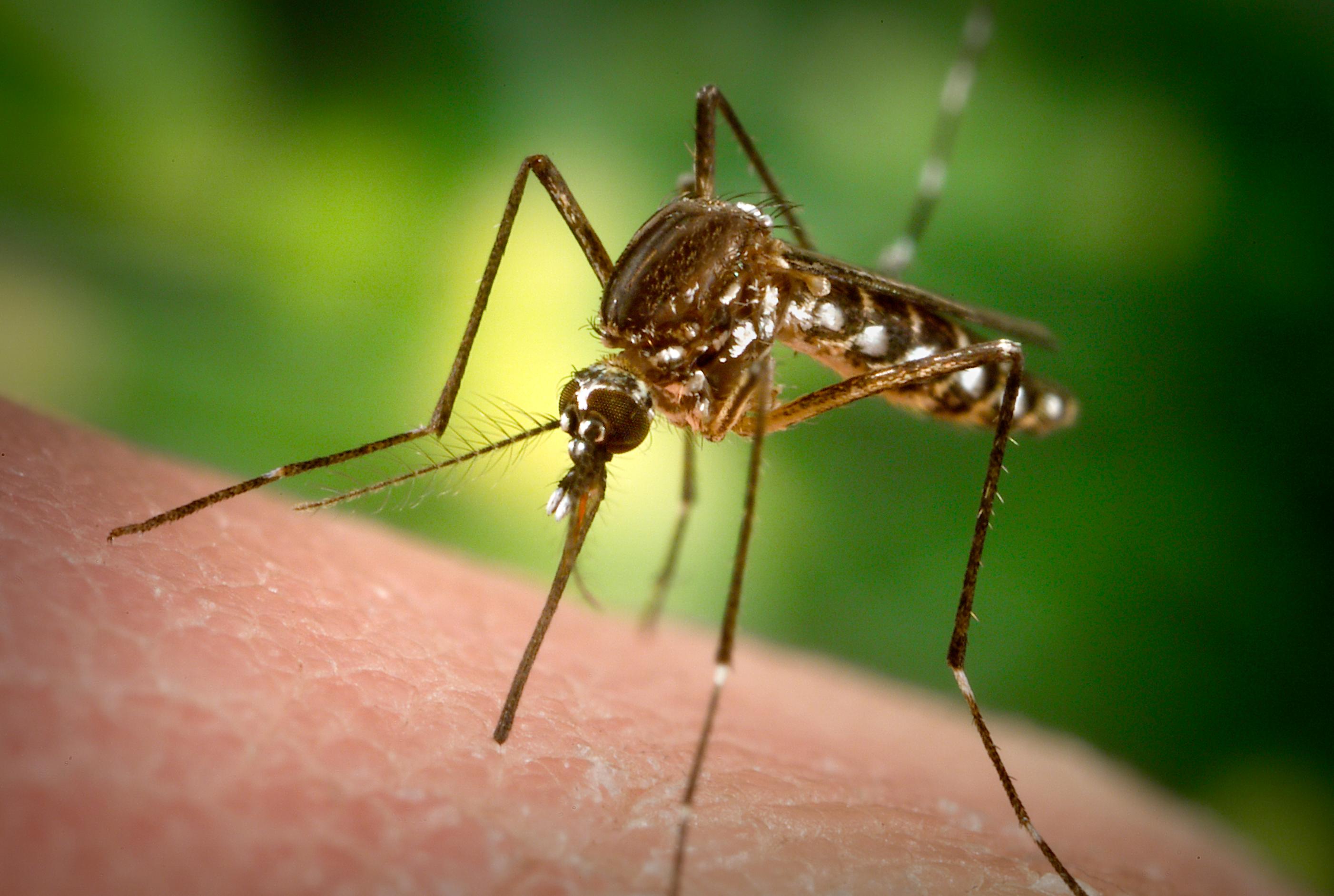Description:
All stages of ticks are exclusively parasitic. Most ticks that attack domestic livestock are in the family Ixodidae, the group referred to as hard ticks. In the family Argasidae, soft ticks, there is one species that is damaging to cattle, the spinose ear tick.
The genus Dermacentor is one of the most important groups of ticks. All ticks are three host ticks which mean they take three bloodmeals throughout development from three different hosts. The adults feed on medium-sized or large mammals and the young feed on small mammals. There are four important species in this group, the American dog tick, the Rocky Mountain wood tick, the Pacific Coast tick and the winter tick.
The genus Boophilus, cattle fever tick, has small with small sized ticks that feed only on one host, cattle. They are found in most regions of the world but were eradicated from the US decades ago due to the Babesia pathogen they carry that causes a fatal disease in cattle.
The genus Rhipicephalus includes the brown dog tick and the brown ear tick. They are mainly found on mammals and sometimes on birds or reptiles.
The genus Amblyomma contain medium to large sized ticks that parasitize all terrestrial vertebrates. Important species include the Gulf Coast tick, the Lone Star tick, and the tropical bont tick.
The spinose ear tick is in the genus Otobius, the adults do not feed but the young are found in the auditory canals (ears) of cattle and wildlife.
Ticks have four stages of their lifecycle, egg, larvae, nymph and adult. All ticks feed on blood during some or all stages. Ticks have remarkably long lives with many surviving for one or more years without feeding.
Hard tick females take one large bloodmeal after mating in which they swell and then drop from the host to lay hundreds to thousands of eggs. The female will then die after laying eggs. The male will feed repeatedly and mate several times before death.
Soft tick females take repeated small bloodmeals and lay several batches of eggs after each feeding. They can go several months between feedings and typically mate off of the host, they are resistant to starvation. The spinose ear tick is very different in that the female does not feed, so they lay eggs without feeding.
Feeding begins with the secretion of a cement-like substance during the first 2 days. The tick then gradually begins to feed and creates a new outer layer to accommodate the massive bloodmeal.
Animals Attacked:
All domestic livestock and wildlife
Veterinary Impact:
Brown dog tick prefers dogs and often infests houses, especially when dogs are kept inside. They cause considerable stress to owners and dogs that encounter thousands of them during summer months.
American dog ticks are major pests of people and domestic animals. Adults will attack dogs, medium mammals, livestock and humans. Adults are most abundant in late spring and early summer. American dog ticks are a major vector (carrier) of Rocky Mountain spotted fever in the eastern US.
Rocky Mountain wood tick is an important pest attacking livestock and wildlife in western North America. They are the primary vector of Rocky Mountain spotted fever and Colorado tick fever virus.
Lone star tick is one of the most notorious tick pest species in the US. All stages of the tick attack companion animals, livestock, wildlife, and humans. Deer are the primary hosts for the adults.
Gulf Coast tick attack a wide range of birds and mammals with adults feeding mostly on ruminants. Gulf Coast ticks feed mainly on the head and ears and can cause severe injury to the skin of cattle rendering the hides useless from the bites and secondary infections.
Tropical bont ticks are found in Africa and the Caribbean and at times have made their way to Puerto Rico. The tick attacks livestock and wild ruminants as well as birds. They are carriers of the rickettsia virus that causes heartwater disease, a very devastating disease to the cattle industry.
Cattle fever tick ranges throughout the world in tropical regions. They typically are parasites of cattle but have been found to infest white-tailed deer and nalgi. They can lead to reduced weight gains and milk production with heavy infestations. The tick also transmits the protozoan Babesia bigemina, which causes Texas Cattle fever, a devastating disease of the cattle industry. For more information, click here.
Spinose ear ticks are found in western North America and frequently infest livestock, especially cattle and horses. The adults do not feed but the young feed in the ears of their host causing injury to the auditory canal and secondary infections.
Asian longhorn tick newly, discovered in the continental United States, originates from Asia as its name suggests. These small ticks are known parasites of over 15 different animals including cattle, horses, pigs, deer, dogs, cats, opossums, rodents and humans, to name a few. They can lead to reduced production and even death by anemia due to their ability to reproduce parthenogenically (without a male). This tick is also a known vector of the causative agents of anaplasmosis in humans, babesiosis in dogs, Japanese spotted fever and theileriosis of cattle.
Ticks transmit many microbial disease agents to livestock and companion animals. They also can be debilitating and sometimes fatal to the host. Heavily infested livestock and poultry may experience economic reductions that can be significant.
Disease Transmission:
Babiesiosis is caused by Babesia bovis and B. bigemina. It is a severe disease to cattle that begins with the development of a high temperature, cessation of feeding and followed by dehydration. As the disease progresses the animals become lethargic and will eventually lapse into a coma and sometimes die.
Heartwater disease (not here) is an ehrlichial disease of large ungulates. Infected cattle start with a fever, become disoriented, show signs of motor disorder, have trouble walking and muscle twitches. A few days after infection, the animal will become listless and loss of appetite, eventually they start to have convulsions and soon die afterwards. The dead or dying animal will exhibit huge amounts of fluid around the heart. Some animals will survive and develop immunity. Heartwater is a very devastating disease for the cattle industry.
Tick paralysis is common in livestock and pets and causes injury or death to thousands of animals each year, caused by three different Dermacentor species in North America.
Control:
Historically the way to control ticks and their diseases was to use pesticides, acaricides, to kill the ticks and their infectious agents. Slowly many ticks are becoming resistant to the commonly used pesticides.
Early removal of attached ticks is important in minimizing the risk of contracting tick-borne diseases.
Acaricide choices are limited to diazinon, pyrethroids, carbaryl and avermectins. Dipping vats have been shown to be effective ways to treat cattle by making them walk through the acaricide baths but recent years have shown a decrease in this method except at the border for cattle fever tick populations. Applying the products with a high pressure sprayer or pour-ons are other options, as well as dusts. Ear tags were originally designed to be used against ticks and are still very effective in preventing infestations but the movement away from ear tags for horn fly control has lead to an increase in tick outbreaks on cattle.
Vaccines have been shown to be effective in others countries against tick infestations but are not yet usable in the United States, hopefully one day they will be.
Field management provides another way to control tick populations by eliminating stages of ticks not on the host by destroying or removing vegetation where ticks hide. Vegetation changes can be done by burning or clearing, ticks need cover to prevent desiccation from the heat.
Eradication had been achieved before with the cattle fever tick, but not a possibility anymore due to the amount of time, money, personnel and resources needed to attack tick populations in the amount of force needed to completely rid the US of them.

